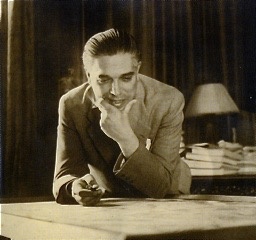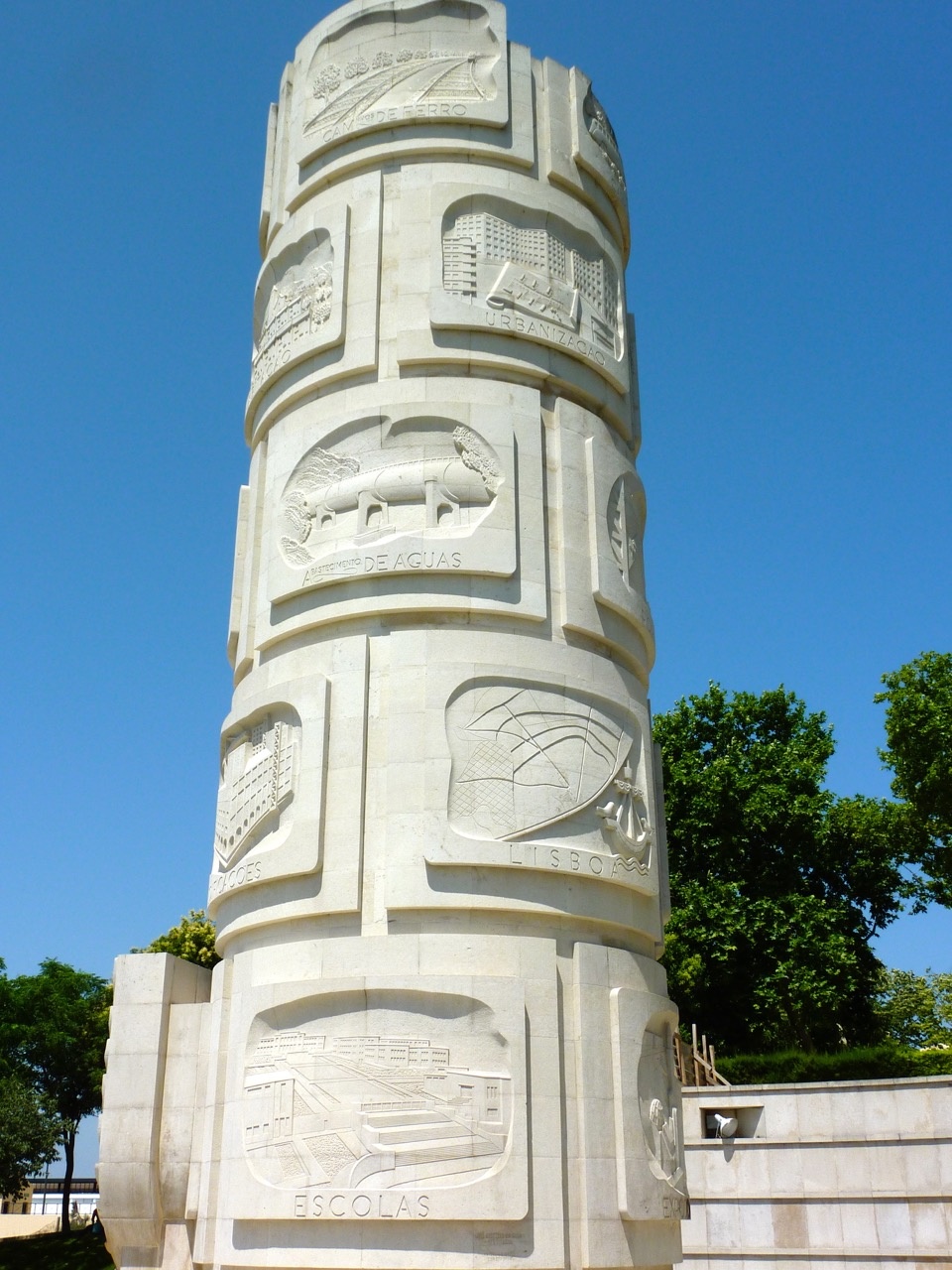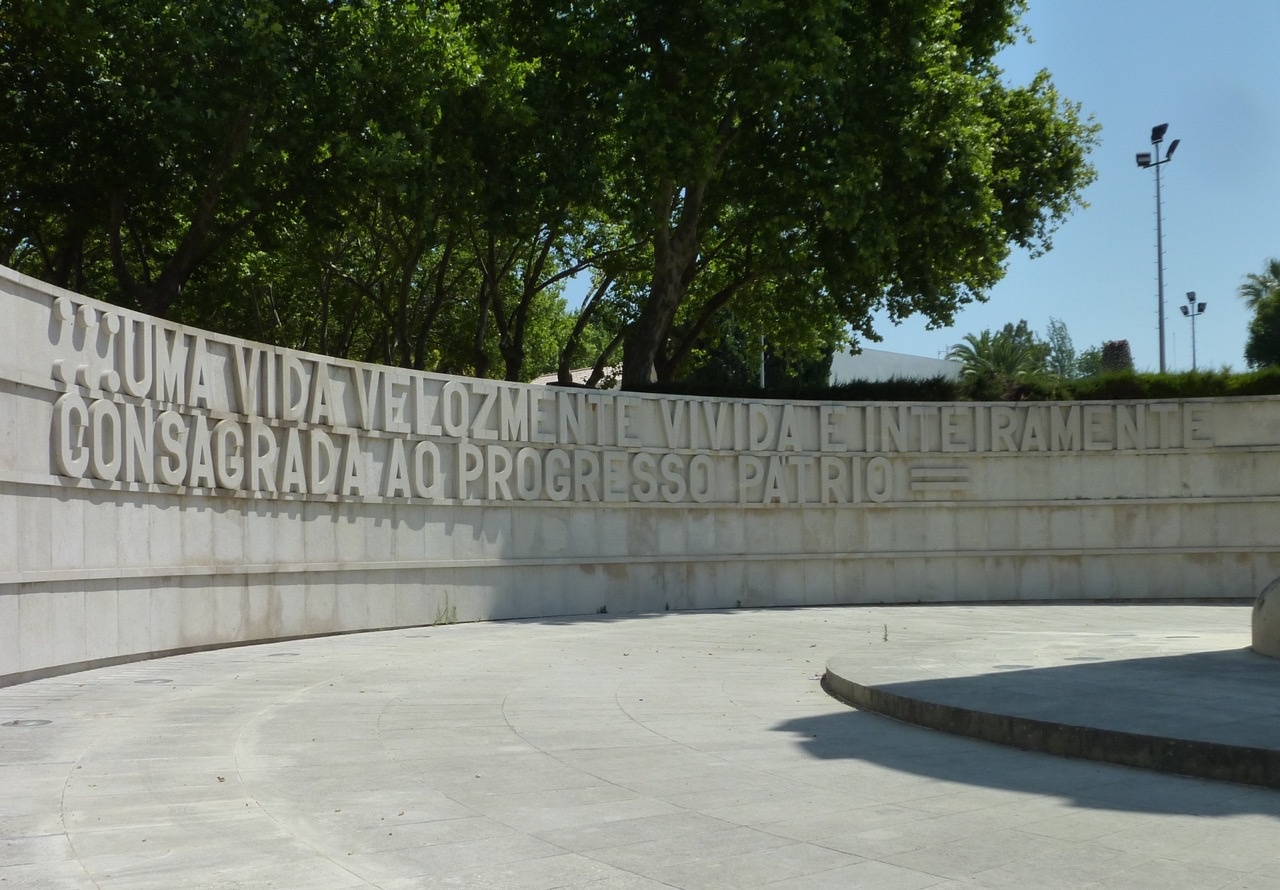Lynne Booker

Who are the most famous Algarveans? Most people have heard of the current President, Aníbal Cavaco Silva, originally from Boliqueime. Some might remember Manuel Teixeira Gomes, eighth President of the Republic, born in Portimão. The poets João de Deus (São Bartolomeu de Messines) and António Aleixo (Vila Real de Santo António and Loulé) hold a place in the hearts of Portuguese people. But, how many people remember the man who had a massive effect on the built environment which changed the face of Portugal? Duarte Pacheco was a native of Loulé and is described on the monument dedicated to his memory in Loulé as a man who dedicated his energy and his life to the progress of his country. It was a surprise to find that Ofir Chagas in his recent book Algarve e Algarvios (reviewed in Algarve Goodlife, June 2010) dedicated only one paragraph to this immensely effective worker on behalf of Portugal. The interpretation of the history of dictatorships often lacks objectivity, particularly in the period immediately afterwards, and it may be that Pacheco´s service to the right wing Estado Novo is nowadays less well received. In the year that sees the centenary of the implantation of the Portuguese Republic, it may be appropriate to reconsider the impact on Portugal of this energetic Algarvean.

Pacheco was born in Loulé on 19 April 1900 although the records give the year as 1899. There is a plaque on the yellow house opposite the Câmara building to mark his birthplace. Pacheco said that he had never had the records changed later when he was important enough to do so, because people thought he was even then too young for office. Pacheco was a born joker but after his father´s death became more serious and a brilliant student, regularly getting marks as high as 90% and graduating with 95%. He had no time for anything but work and he expected the same dedication from those who worked for him. Appointed Minister for Public Education on his 28th birthday, he was designated by the President of the Council to invite Dr António de Oliveira Salazar to become Finance Minister in the government of General José Vicente de Freitas. Although Pacheco is reported to have said that he regretted involvement in this manoeuvre, Salazar´s 40 year dictactorship made possible Pacheco´s great contribution to the changing face of Portugal.
With the exception of 30 months, Pacheco was Minister for Public Works and later Public Works and Communications from July 1932 until his untimely death in November 1943. Full of energy and enthusiasm, he was a leader who could make decisions rapidly and who had an eye for detail and who was " the imaginative and creative force who made possible the impossible" (Diogo de Macedo). Even as Minister, he was known to work very long and late hours, and when asked by the daughter of his friend Jorge Gomes de Amorim why he had never married, Pacheco responded that he had never had the time.
It was Pacheco´s dream to create an architectural style that would unify Portugal and Portuguese overseas territories and his impact on the environment might be compared with that of Pombal after the earthquake of 1755. Dr Salazar gave him carte blanche to cut through bureaucratic red tape, and Pacheco responded energetically by creating new legislation where necessary and introducing compulsory purchase. The process of expropriation enabled town councils to impose a uniform building style - the new ´traditional Portuguese´style which became the national and empire-wide model. One of Pacheco´s plans was to create ´an imperial capital´in Lisbon. The changes which he masterminded in the capital included the National Stadium, Portela airport, Monsanto Park, the Lisbon - Vila Franca de Xira motorway, the Cascais Marginal, social housing at Alvalade, Encarnação, Madredeus and Caselas. He greatly improved the water supply to Lisbon, crucial in a city that grew by 62% in the years 1920 - 1930. His was the plan in 1934 for a bridge over the Tejo which became the Ponte Salazar in 1966 (now the Ponte 25 Abril) and he was the originator of the practice of town planning in Portugal. Reconstructions and renovations under his direction include Palácio de São Bento, Castelo de São Jorge, the cathedral, the São Carlos National Theatre, the Palácio de Queluz and the Paço Ducal de Guimarães.
Throughout the rest of the country Pacheco´s influence was felt in thousands of minor works concerning local roads, fountains, drains and cemeteries; he rehoused people in prefabs, created or remodelled parks and gardens, constructed 10,000 primary schools, added to existing grammar schools, completed the faculties of Engineering and Pharmacy in Oporto University; insisted on better road signage; abolished tolls on bridges; contributed to the new Pousadas de Turismo which were founded in 1942; regulated heavy road transport and created the Association of Road Transport Industry; revolutionised the postal and telecommunication services; modernised the country´s deep water port facilities; initiated important hydrographic studies of the rivers Zêzere, Lis, Vouga, Mira, Mondego and Guadiana and he instigated the project for the dam at Castelo de Bode. Everywhere and anywhere you look in Portugal you will find the influence of Duarte Pacheco.
A whirlwind from the Algarve, Pacheco not only changed how Portugal looked. Whilst much of the rest of Europe was involved first in the threat of war and then war itself, Pacheco was providing a fillip to the economy and to national pride. Engineers, architects, artists (painters and sculptors to decorate buildings), musicians (he was founder of the Grand National Symphony Orchestra and the Emissora Nacional - the Portuguese broadcasting corporation), building contractors and workers all benefitted from the huge expansion in urbanisation and the nationwide road building programme. While Portugal was creating an infrastructure, most of the rest of Europe was at the same time destroying their own in World War II. He was a major contributor to the National Exhibition in Belém, an Exhibition which opened in 1940 when most of Europe was preoccupied with war. Although internationally a failure, within Portugal this exhibition was a resounding success.
On 15 November 1943 Minister for Public Works Pacheco made a visit to inspect the gardens and the new statue to D João IV in Vila Viçosa (it is still there in front of the Bragança ducal palace). He delayed his return journey too long, and urged his chauffeur to make up lost time so that the Minister might reach Lisbon in time for a meeting of the Council of Ministers. His famous black Buick crashed near Vendas Novas, killing outright his companion Engenheiro Agrónomo Jorge Gomes de Amorim, and Pacheco himself died in hospital in Setúbal the following day. The President of Loulé Câmara made a request to the President of the Council of Ministers that Pacheco´s remains to be translated to Loulé for burial. Dr Salazar refused on the grounds that Pacheco had spent his life of public service in Lisbon and it was deemed fitting that his remains should rest there.
Dr Salazar suggested that the Câmara erect in Loulé a monument to his memory, and it was financed by subscription from each of the Câmaras in Portugal. The monumental pillar was inaugurated on the tenth anniversary of Pacheco´s death by Dr Salazar himself, and words from his eulogy appear on the wall around the monument Uma vida velozemente vivida e inteiramente consagrada ao progresso pátrio (a life lived at a furious pace and entirely dedicated to the progress of his country). An entirely appropriate and descriptive tribute. In an allegory of Duarte Pacheco´s work, the pillar (the aggregated and voluntary work of ten contemporary sculptors) appears unfinished. The bronze effigy in bas relief at the base is the work of Leopoldo Almeida, who had worked with Pacheco at the National Exhibition and also sculpted D Sancho I in Silves and the equestrian statue of D Nuno Álvares Pereira at Batalha. There are eighteen scenes sculpted on the stone of the pillar and they portray the areas of national life on which Pacheco had such a profound influence: agricultural water, airports, bridges, buildings, hospitals, housing, Lisbon, national monuments, ports, radio broadcasting, railways, roads, road transport, schools, the national stadium, the National Exhibition, town planning and urban water supply.


Many of the cities, towns and villages in Portugal have named a road or public building in honour of this remarkable man who dedicated his life to his country. During Pacheco´s time as Minister, the Câmara of Loulé opened a new street against the express wish of the Minister and Pacheco subsequently quarrelled with the President of the Câmara; ironically, that street is now known as Rua Engenheiro Duarte Pacheco.
